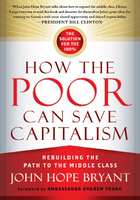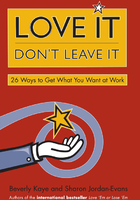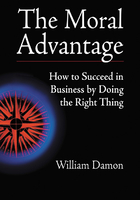The Environmental Movement as a Response to Overconsumption
What we think of as the environmental movement today has in reality been a longer process existing in three main phases. The first phase dealt primarily with the regulation of toxic substances that are a by-product of overconsumption. The second dealt with organizing people to respond to the negative effects of pollution in marginalized communities. The third phase, where we are now, consists of transforming our lifestyles, seizing opportunities for innovation, and involving people in the movement who have never been involved before. There was also an important precursor to these three phases—the transformation of the management of resources after the worldwide colonial era.
Throughout each stage, Islam and the environmental movement have had much in common. Each phase contains elements that reflect the six principles of a Green Deen: understanding the Oneness of God and his creation (tawhid); seeing signs of God everywhere (ayat); being a steward of the Earth (khalifah); honoring the trust we have with God (amana) to be protectors of the planet; moving toward justice (adl); and living in balance with nature (mizan). From the perspective of these principles, the environmental movement can be seen as an attempt to restore balance and justice to the Earth after the environmental destruction caused by overconsumption.
As you read this chapter, think about your own personal history. Where are your parents from? Your grandparents? How does your family history align with the stages and events of the environmental movement?
Colonial and Postcolonial Management of Natural Resources
To give a broader historical context to today's environmental movement, we need to look at the management of natural resources under eighteenth- and nineteenth-century colonialism and at a precursor to today's movement—the postcolonial transformation of resource management in the colonized nations. Colonialism, starting in the 1700s, was the process by which European nations took over (by their standards) less developed countries, giving Europeans access to the plentiful natural resources found around the world. These colonizing nations used these resources to produce goods that created profits and also waste. In stripping these countries of their resources, the colonizers also created oppressive social orders that subjugated millions.[1]
Soon enough, by the 1900s, popular resistance movements began and eventually, by midcentury, achieved success against the colonial powers, who through the resources of their colonized peoples, industrialization, and free-market capitalism had created the way of life that dominates the world today. Over time, the will of the people of these countries to move toward justice (adl) in their own lands was too strong. One by one, former colonies liberated themselves politically and regained control over their natural resources. Unfortunately, some former colonies did not know how to manage their resources and therefore stayed indebted to the corporate structures of the colonial powers—for instance, to diamond companies in Sierra Leone, to fruit companies in Latin America, and to oil companies in Iraq.[2]
In the postcolonial period, formerly colonized nations began the long process of restoring justice to the management of their own natural resources, a process that continues through the present. They were, in effect, striving for justice within a Green Deen.
Since the beginning of the labor movement in the late 1800s, this search for justice was also trapped in an ideological struggle that is the opposite of a Green Deen. On one side were democracy and free-market capitalism; on the other, Marxist socialism. Each of these Western ideas was heralded as the right idea of social organization. Muslim nations were trapped in the chess game of the post–World War II Cold War, which provided the staging grounds for this conflict of ideas. Afghanistan famously struggled with British and Soviet influence, the result of which tore at the fabric of civil society, stunting its development. Almost all of the emergent African nations—in particular, Egypt, Algeria, and Somalia—were involved in this dichotomy of communism versus capitalism.
At the core, neither is a choice in the Deen, or religion, of Islam. Libya, a Muslim nation, struck another chord by calling for another path of pan-Africanism, a plan to unite all the African nations. Still, the stage was set for a battle over power and control in a postcolonial world that was splitting roughly between capitalist and socialist thought. To understand how both systems are inconsistent with a Green Deen, let's look at their essential elements. Democracy allows the participation of all citizens. Free-market capitalism offers big rewards to anyone with the ambition and the opportunity to produce marketable goods. The basic organizing principle of democratic capitalism is the individual. In contrast, the basic organizing principle of Marxist socialism is a guided economy centered around the needs of the group.
A Green Deen is neither socialist nor capitalist—it is interested in both the individual and the collective.[3] Capitalism and socialism see humans as units of production and consumption. Islam sees each individual human being as having intrinsic value and worth. Your soul is what makes you special, not what you make or use. You are not just a cog in a capitalist or socialist machine. At the same time, you have a responsibility to the people, the plants, the animals, the air, the water, and the land around you. When we are living a Green Deen, we recognize that we rely on all of creation for our survival, and that all of creation relies on us for its survival. Once again, we are all connected to the Earth, and the Earth is connected back to us—the principle of Oneness (tawhid).
The model of democratic capitalism offered by the United States prevailed in the twentieth-century but was not without flaws. For example, racism, with roots in the colonial infrastructure, reinforced structural inequalities. These included systemic ways in which inequality was imposed, be it through lack of opportunity to education or through infrastructure control, such as limited resources, redlining to disallow for home ownership by certain groups, or policies that institutionalized Jim Crow laws in the South. Structural inequalities created a lack of equal opportunity for blacks, Native Americans, and immigrants before they assimilated.[4] Internally, some of these inconsistencies have been addressed through the civil rights movement, and, externally, the United States has made some effort to reform its relationship with former colonies.
In a speech delivered in Cairo on June 4, 2009, President Barack Obama referred to the effects of colonialism and the Cold War on the relationship between Muslim nations and the West, saying: “Tension has been fed by colonialism that denied rights and opportunities to many Muslims, and a Cold War in which Muslim-majority countries were too often treated as proxies without regard to their own aspirations.”[5] These struggles, in places with large Muslim populations, such as India, Nigeria, and Indonesia, were part of a dynamic that has affected the Muslim world and the way it exists today, politically, economically, socially, and environmentally.
Indonesia
Indonesia provides us with an example of a colonized nation that underwent centuries of colonial exploitation of its resources, finally gained its independence and control over its resources in the twentieth century, then slowly developed into a green nation.
The first Europeans to arrive in Indonesia were the Portuguese in 1512, followed by British and Dutch traders, all of whom sought control of the country's resources, especially its spices. In 1602, the Dutch established the Dutch East India Company, which dominated Indonesian resources until its bankruptcy in 1800, after which the Netherlands established the Dutch East Indies as a nationalized colony.
The Dutch left in 1940 during World War II, spurred by the invasion of the Japanese. The transfer of power sparked an Indonesian independence movement led by Sukarno, and the nation claimed independence in 1945.
Soon after, Indonesia grappled with democracy, authoritarianism, and communism. The military leader, Suharto, took power in 1965 and led Indonesia into the era of foreign investments—basically, modern-day colonialism. In 1998, Suharto resigned, and since then, Indonesia has been attempting to strengthen itself as a democracy, holding its first presidential election in 2004.[6]
With control over its own resources, rapid industrialization, and a large population (206 million, almost 90 percent of whom are Muslim), Indonesia has suffered from its own share of environmental issues, including widespread pollution of its waterways, soil, and air, and destruction of its forests and wildlife by industries such as mining, timber, and manufacturing.[7] It has therefore recently made a special effort to address environmental issues. Indonesia has one of the few eco-mosques in the world and has developed green infrastructure development through funding of clean energy technology.[8] There is even a Green Building Council, which recently issued green building rating tools.[9]
One of the tragedies of modern times is that when former colonies liberated themselves from political control, that control was supplanted by the economic control of large corporations. I describe this phase as a precursor of the environmental movement because, while in its essence the postcolonial phase was about the management of natural resources and control over land use policies, it was not couched as such. Former colonies wanted political power to determine how they would control their own resources, yet they, by and large, had bought into the pervading notion that development, the Western way, was the only way forward.
What remains are the consequences of this postcolonial era. We see how corporate interests are trying to take resources from places such as the African Muslim nations mentioned earlier, which are still locked in a struggle to control their own respective environments. This ongoing struggle, whether it be through legislation in Indonesia or direct action in Nigeria's Niger Delta, is part of our Deen, the path or religion of Islam, that we need to understand as we move toward justice (adl) in the way that human beings interact with the land, the air, the sea, and importantly—one another.
Conservation as Part of a Green Deen
Beginning roughly in the late 1800s, the conservation movement was a by-product of the industrial age in reaction to overdevelopment, which had negatively affected the balance that God made in nature. This overdevelopment was fueled by overconsumption. Forests were cut down and rivers polluted. Coal-fired factories and trains stitching across industrial towns spewed ash and soot into the streets. Growth and development happened so quickly that it soon strangled the natural world. In response, large industrial cities, not immune to the negative effects of development, started to make conservation a priority.[10]
The conservation movement had big personalities and big champions. One was President Theodore Roosevelt, who said, “I recognize the right and duty of this generation to develop and use the natural resources of our land; but I do not recognize the right to waste them, or to rob, by wasteful use, the generations that come after us.”[11] Roosevelt realized the injustice that occurs when people are wasteful, and his words echo balance (mizan) and justice (adl), two of the six basic Islamic principles necessary to follow in living a Green Deen. Another early champion of conservation was the poet Walt Whitman, who was instrumental in getting parks into urban areas that were choked by filth from overdevelopment.[12] Conservation efforts are responsible for the creation of parks and preserves all over the world and have helped to preserve natural areas from deforestation, logging, and the interests of developers.[13]
Still, while conservation efforts were good, creating national parks and protecting specific areas from developers did not do enough to restore the natural world's divine balance. Conservation is not enough in a Green Deen. Yes, we need to conserve the natural world so that it can be allowed to maintain its balance, but we need also to think in terms of managing the resources that are of so much value so that we can benefit from the bounty of the planet. A Green Deen is about using the resources of the Earth smartly and efficiently.
Environmental Regulation and Protection
The next phase of the environmental movement focused on the unjust actions of polluting industries. After the world was trapped in wars over ideas and resources (World Wars I and II, and the wars for independence in colonial countries), the results of this rapid industrialization—and its negative consequences—became apparent. Beginning roughly in the mid-1900s, governments began to require regulation of industries and to mandate the protection of wildlife and open space. Typically, a company would manufacture a product. The manufacturing process would create waste and pollute air, water, and land. The pollution would continue for decades, and people would get sick—really sick. The company would try to cover up pollution and illness. Eventually, a courageous person or group of people would step up and demand regulation of the company. The demand for regulation would first become policy, then regulatory guidelines for all companies in the same industry would appear.[14]
The 1970 Clean Air Act was one regulatory outcome of this product-pollution-illness-advocacy trajectory. In 1948, the small village of Donora, Pennsylvania, home to American Steel and Wire and Donora Zinc Works, was blanketed by a thick smog caused by air pollution from the factories. Seventy people died. Advocates lobbied for regulation, which resulted in the 1955 Air Pollution Control Act. As time progressed, air pollution came from more than just factories—cars became a major culprit. The 1970 Clean Air Act included emissions standards for automobiles and gave citizens the right to take legal action against entities in violation of these standards.[15]
People began to understand that the systems of water, air, and soil were all connected and that pollution in one would lead to pollution to another. In 1962, Rachel Carson's landmark book Silent Spring opened our eyes to the dangerous effects of pesticides on our water and soil systems. These dangers to the natural world would eventually turn into dangers for humans. Ten years later, use of the pesticide DDT was banned in the United States. While people were not explicitly talking about seeing the signs of God in nature and observing what we were doing to the planet, Rachel Carson's spirit was essentially causing millions to see the Earth as sacred.
Muslims were part of the process of raising awareness of the Earth as sacred as early as 1966, when the young scholar and Iranian Muslim philosopher Seyyed Hossein Nasr delivered a series of lectures at the University of Chicago in which he examined the relationship between man and nature. Nasr became the father of the modern Muslim environmental movement, and these lectures were later published as Man and Nature: The Spiritual Crisis of Modern Man.[16]
In 1970, the U.S. Environmental Protection Agency (EPA) was formed, with a mission to foster conditions under which man and nature can live in productive harmony. The EPA would from then on be responsible for creating and enforcing regulations on industries and citizens in order to protect the planet. Regulations picked up momentum in the 1970s. The Water Pollution Control Act of 1972 regulated pollution coming from industrial facilities, and the Resource Conservation and Recovery Act of 1976 (RCRA) set national goals for protecting human health, conserving energy, reducing the generation of waste, and ensuring that wastes are managed in an environmentally sound manner.[17]
Environmental Justice—People's Environmentalism
The environmental justice movement came about as a response to the disconnection between people and planet. Islam has a lot to say about this disconnection. In the environmental justice movement, trees, animals, and humans all have the same level of importance.[18] They are all significant parts of the ecosystem. This part of the environmental justice movement essentially follows the principles of a Green Deen—it believes that human beings and the planet are One (tawhid) and that justice (adl) to the environment—including animals and trees—means justice to people as well. Similarly, injustice to the environment means injustice to people. For example, as pollution increases, health decreases.
However, government regulations did not accomplish effective community organizing. As environmentalists Michael Shellenberger and Ted Nordhaus wrote in their 2004 essay “The Death of Environmentalism: Global-Warming Politics in a Post-Environmental World”: “Our parents and elders experienced something during the 1960s and 70s that today seems like a dream: the passage of a series of powerful environmental laws too numerous to list, from the Endangered Species Act to Clean Water acts to the National Environmental Policy Act.”[19] However, people realized that more than policy was necessary for balance between people and planet. Shellenberger and Nordhaus continue: “It was also then, at the height of the movement's success, that the seeds of failure were planted. . . . Success created a strong confidence and in some cases, bald arrogance that the environmental protection frame was enough to succeed at a policy level.”[20]
The Green Economy Movement
The final phase of the environmental movement is where we are now—finding economic opportunity in the environmental movement. In 2005, the murmurs of the green economy were already beginning to make noise. Activists like Van Jones, then of the Ella Baker Center (Oakland, California), and Majora Cater of Sustainable South Bronx (New York City) were eyeing the opportunity that could come in the environmental movement to support the communities they were already working in.
The green economy really changes the way we determine accountability. If rooted in environmental justice, it responds to a question I asked in 2005: “Who's going to benefit from the new green industry? Will the hierarchy stay the same when the change comes?”[21]
Who will benefit? The real question is, Who will put in the effort? The critique of the green economy phase is that it is a market solution to something the free market created. That what it encourages is more consumption. That it does not address the root cause—that overconsumption has gotten us into this ecological mess. The promise of the green economy is that it can encourage innovation and efficiency and increase pollination of ideas and collaboration across sectors.
Which sectors? This approach places accountability not only with governments, to provide regulation, but also with everyday people—to make new choices and decisions with their dollar to assign a collective value to products and services. It holds companies accountable to diversify their business models to incorporate the effect of their processes on the natural world and—with the laws of supply and demand—to respond to the demands of their consumers who hold Green Deen principles dear.
This “people's environmentalism” approach has been described by Van Jones as a green growth alliance,[22] and it includes the “civic sector”—shorthand for nonprofits and religious institutions. Allah has made us all stewards of the Earth, and our collective opportunity for action has come in the green economy movement, guided by the principles of environmental justice, which place humans as part of the natural world. All sectors now have an opportunity to be held accountable for the ecological crisis—and also to score a net gain from the cleanup and transition to a greener, cleaner, more equitable future that affirms the Oneness of God and His creation. We see the opportunity in His signs (ayat) in nature. We are moved toward justice (adl) economically and environmentally to ensure the balance (mizan)—all to be the best stewards (khalifah) we can be, to honor the trust or covenant (amana) we have with our Creator to leave the Earth better than we found it.
The next chapter, “Green Muslims,” highlights Muslims who are actively involved in the environmental movement—from conservation, protection, and regulation to fighting for environmental justice and finding opportunity in the green economy. We are already active in the transformation of our current relationship with the Earth into being stewards of the Earth. No finger wagging here to tell you to starting thinking about it. The people whose stories we share in “Green Muslims” have already committed and invested time into their Green Deen.
Of course, this transformation requires work, and the Prophet Muhammad (peace be upon him) provided the best example for being a steward of the Earth. When Aisha, the wife of the Holy Prophet (peace be upon her), was asked, “What was the usual practice of the Messenger of God at home?” she replied, “He was a human from among other humans, he himself removed the lice from his clothing, milked his goats, and did all his work himself.”[23]
What work are you willing to do to green your Deen?
notes:
[1]. Albert Memmi, The Colonizer and the Colonized (Boston: Beacon Press, 1967).
[2]. Muhammad Baqir al-Sadr, Islam and Schools of Economics (Pakistan: Islamic Seminary Publications, 1979), 16.
[3]. Ibid., 18–20.
[4]. Ibid., 16–18.
[5]. Barack Obama, “Remarks by the President on a New Beginning, Cairo University, Cairo, Egypt,” press release, June 4, 2009, www.whitehouse.gov/the_press_office/remarks-by-the-president-at-cairo-university-6-04-09.
[6]. U.S. Department of State, “Background Note: Indonesia,” www.state.gov/r/pa/ei/bgn/2748.htm.
[7]. Sunanda Creagh, “Time Needed for Indonesia Environment Law: Official,” Reuters, October 16, 2009, www.reuters.com/article/idUSTRE59F0T220091016.
[8]. See
go/news.display/id/20585 for examples.
[9]. “Green Building Council Indonesia Issues Green Building Rating Tools,” Jakarta Post, www.thejakartapost.com/news/2010/06/17/green-building-council-indonesia-issues-green-building-rating-tools.html.
[10]. Library of Congress, “The Evolution of the Conservation Movement, 1850–1920,”
[11]. Theodore Roosevelt, “New Nationalism” speech, given in Osawatomie, Kansas, on August 31, 1910, history.org/library/index.asp?document=501.
[12]. New York City Department of Parks and Recreation, “Fort Greene Park,” www.nycgovparks.org/parks/FortGreenePark.
[13]. Library of Congress, “Evolution of the Conservation Movement” (see n. 10).
[14]. Lamont C. Hempel, Environmental Governance: The Global Challenge (Washington DC: Island Press, 1996), 119.
[15]. U.S. Environmental Protection Agency, “Clean Air Act: Title II: Emissions Standards for Moving Sources,” www.epa.gov/air/caa/title2.html.
[16]. Seyyed Hossein Nasr, Man and Nature: The Spiritual Crisis in Modern Man (Chicago: ABC International, 1997). Originally published as Man and Nature: The Spritual Crisis of Modern Man (London: Unwin, 1976).
[17]. U.S. Environmental Protection Agency, “Summary of the Resource Conservation and Recovery Act,” www.epa.gov/lawsregs/laws/rcra.html.
[18]. Charles Brown, Christopher Norwood, Melissa Brown, and Elizabeth Green, presentation on “Exploring our World Through Building Environmental and Social Justice,” New York, January 29, 2009.
[19]. Michael Shellenberger and Ted Nordhaus, “The Death of Environmentalism: Global-Warming Politics in a Post-Environmental World” (2004), www.thebreakthrough.org/PDF/
Death_of_Environmentalism.pdf.
[20]. Ibid.
[21]. Manami Kano and Vivian Chang, “Enviro-Justice Activists Send a Dispatch from a Panel with the Reapers,” March 4, 2005, www.grist.org/article/chang.
[22]. Van Jones, The Green Collar Economy: How One Solution Can Fix Our Two Biggest Problems (New York: HarperCollins, 2008).
[23]. Shamaa-il Timidhi, trans. Muhammad Bin Abdur Rahman Ebrahim (New Delhi: Adam Publishers), hadith 13.















